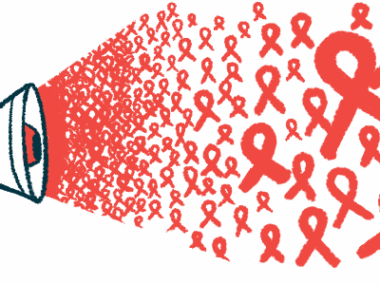Celebrities Share Their EDS Battles and Help to Spread Awareness
Written by |

Recently, Ehlers-Danlos syndrome (EDS) made news headlines. That doesn’t happen often.
Actress Lena Dunham announced that she has EDS in response to questions about a photo of her using a mobility aid. While I’d heard her name, I knew little about the actress, but I want to give her some serious kudos for being open while speaking out about having EDS.
Like most other rare diseases, few people know about EDS outside of the affected communities. It’s still commonplace for me to be the only patient with EDS that a doctor has ever seen. They’ve learned about the disorder in medical school or read about it in journal articles, but have never seen its manifestation in an actual person.
When I encounter a medical professional who knows little about my condition, I look upon our meeting as a learning opportunity. I am patient when allowing them to examine me. I reveal all of my common, less obvious EDS symptoms: flat feet, high-arched palate, soft and stretchy skin, and joints that can hyperextend. I don’t mind showing them these features. And if I’m at a clinic or hospital where interns and residents are treating me, the attending doctor will often ask if they can see me, too.
I always say yes. Why not spread awareness? The prevalence of EDS is estimated at 1 in 5,000 people, so it makes sense that few doctors see cases like mine. Perhaps if I allow them to examine me, someday in the future, they might recognize the same symptoms in another patient and set them on a path toward a diagnosis. Though awareness of EDS has increased, underdiagnosis remains a significant problem.
While doing research for this column, I also discovered that Australian singer-songwriter Sia and actress Jameela Jamil recently disclosed their EDS diagnoses as well. Thanks to their openness, EDS has been described in multiple articles and reports by news outlets worldwide.
I was undiagnosed until 22, despite my dad, who is a doctor, and several of his medical colleagues working to solve the cause of my mysterious symptoms since I was about 10. I believe that greater awareness is hugely important, particularly for people like me who have no family history of the disorder.
I hope that someone will read one of these articles and think, “Hey, that sounds a lot like me. Maybe I should ask about it at my next doctor’s appointment.” If a celebrity talking about their disease leads to someone finally getting a diagnosis and help with issues such as pain management, that’s a win in my book.
That’s why I write this weekly column: to increase awareness and let those of us who rarely meet another person with our condition know that we’re fighting the same battle.
***
Note: Ehlers-Danlos News is strictly a news and information website about the disease. It does not provide medical advice, diagnosis, or treatment. This content is not intended to be a substitute for professional medical advice, diagnosis, or treatment. Always seek the advice of your physician or other qualified health provider with any questions you may have regarding a medical condition. Never disregard professional medical advice or delay in seeking it because of something you have read on this website. The opinions expressed in this column are not those of Ehlers-Danlos News or its parent company, Bionews Services, and are intended to spark discussion about issues pertaining to Ehlers-Danlos.





Marissa Muccio PT
Thank you for this wonderful article. I’m a physical therapist who specializes in scoliosis. Hypermobility is more common within scoliosis. This I quickly learned that reversely scoliosis is the #1 musculoskeletal system presentation of EDS....the education and awareness of how this affects multiple systems: joints, GI, neuro... all SO important!
Thank you!
Karen Del Vecchio
Thanks so much for taking the time to leave a note, Marissa! With EDS being so under-diagnosed, awareness of the varying presentations and how it can affect so many different areas of the body is important. I hope that maybe someone who's been dealing with seemingly unrelated symptoms or who has had issues but no diagnosis may see themselves in one of these mainstream media articles about a celebrity diagnosis and use it as a starting point in finding their own answers. Also, a huge shout-out to you and the other physical therapists out there who work with those of us with EDS and other rare diseases to help us manage our pain and increase our bodies' functionality. It's so important!
Kit zimm
My Goddaughter has recently been diagnosed with EDS. Her health is severely comprised by an craniotomy cervical instability. Her insurance will not pay for out of state neurosurgery which is needed. Any one have any suggestions on specific neurosurgeons or financial sources. She is 20 years old and confined to her bed. Thank you